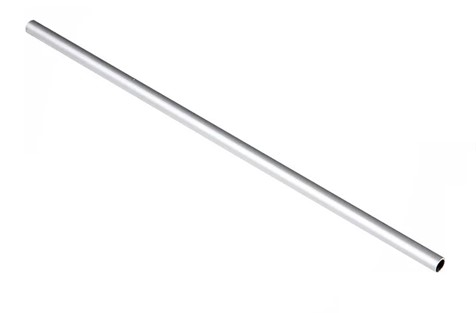The first pads and diapers made from local pulp were produced in Russia

Major manufacturers of disposable diapers and pads, including Drylock Technologies and Flamingo, have made the first batches of products from Russian pulp. Ivan Biryukov, DIRECTOR of the AURA-Tech association (which unites 32 companies producing goods for the elderly and disabled, their total revenue is 215 billion rubles a year), told RBC about this. This was confirmed by Natalya Zaitseva, Commercial Director of Drylock Technologies, and Nikita Volokitin, General Director of Flamingo.
After the EU imposed another package of sanctions against RUSSIA in April 2022, companies lost the required type of pulp, Zaitseva explained. According to Biryukov, about 150 thousand tons of this raw material were imported to Russia annually from the usa , Finland, Brazil, Sweden, France, Belgium and SOUTH KOREA.
At Drylock Technologies, the first batch of Russian raw materials amounted to 1 million diapers and pads, at Flamingo - 2 million diapers for adults. The goods will most likely go on sale before the end of June after passing the sanitary and hygienic certification, says Zaitseva and confirms Volokitin. According to the information and analytical agency INFOLine, in Russia the annual market volume of disposable diapers, pads and diapers is about 4.1 billion pieces.
How expensive are diapers and pads?
Adult diapers in 2021 cost 25.3 rubles. apiece, in March-April 2022, their price reached 53.3 rubles. apiece in public procurement, says Biryukov. The state order for the provision of diapers for adults in need of more than 70% of the market for this product (500 million per year), specifies Volokitin.
A source in one of the federal retailers confirmed to RBC that the purchase prices for diapers and pads have increased by 30% since March. Since February, prices for these goods have risen by an average of 20-40%, says Zaitseva.
There was a strong jump in prices in March, when the exchange rate exceeded 120 rubles. per DOLLAR, now the average price of an adult diaper is 34 rubles, according to a representative of Flamingo (one of the top 5 manufacturers of adult diapers, revenue up to 1 billion rubles per year).
The special operation delayed the crisis in Latin America. But it won't be for long Predictions Pro Look for trends and "dig deep".Currently, alternative options for the purchase of goods for feminine and children's hygiene in the middle price segment, including China and Turkey, are being worked out, says a source in one of the federal retailers. This is due to a shortage of raw materials for production, as well as an increase in logistics costs due to sanctions. A representative of Detsky Mir said that many companies have to switch to Chinese manufacturers. In addition, Detsky Mir has a production of diapers under its own brand in China.
According to a report by the Amiko marketing company, the largest exporter of pads, tampons, diapers and diapers to Russia is China, which in 2021 supplied them for $118 million per year (24.6% of all imports). Hungary ($104.2 million) and Japan ($79.9 million) followed. But for the state order, it is necessary to keep the purchase of Russian-made hygiene products, Zaitseva believes. The press service of the Ministry of Industry and Trade clarified that now registration certificates for participation in public procurement can be issued, including for foreign-made products.
What are the difficulties with Russian raw materials
Typically, paper fiber is made in bales - stacks of sheets with a density of 700-800 g per 1 sq. m and a thickness of about 1 mm, says a source in one of the pulp companies. All equipment for the production of these products in Russia is intended for the production of bales, confirm the press service of the Ministry of Industry and Trade.
For the production of pads and diapers, raw materials are needed in rolls - fluff pulp, Zaitseva notes. According to the Ministry of Industry and Trade, several large Russian cardboard producers have mastered the processing of pulp from bales into rolls. “In fact, the conversion from bales to rolls is further processing of pulp, dissolution, web formation, drying, winding the tambour and cutting into rolls, as a result, the cost of raw materials increases,” says Valery Mirzin, general director of the Nikol-Pak company (ranks tenth for the production of container board). This company has released a trial batch of such raw materials.
In May, a ton of raw materials in the EU cost 58 thousand rubles, and taking into account delivery through China - 140 thousand rubles, says Biryukov. He estimates the cost of Russian raw materials at 100 thousand rubles. per ton. According to Zaitseva, it can reach up to 160 thousand rubles.
In Russia, the production of packaging cardboard will be reduced by a quarter Business
Raw materials may be cheaper if Russia's largest pulp producers - Arkhangelsk Pulp and Paper Mill, the Ilim Group and SLPK Mondi - start producing fluff pulp, Zaitseva believes. But the conversion requires more than €120 million (per unit) and at least four years of work from design to start-up, says a source at the pulp company. According to him, this cannot be realized under the conditions of sanctions. The Ilim group does not have the opportunity to produce fluff pulp, they say in its press service. RBC sent inquiries to the Arkhangelsk Pulp and Paper Mill and SLPK Mondi.
“Flamingo, in order to provide itself with raw materials in full, acquired the first line for processing sheet pulp. In August, they plan to purchase a second one, says Volokitin. The cost of each line is €350 thousand. Two lines will process 500 tons of raw materials in bales per month, then 10 million diapers will be made from it. Drylock buys raw materials to make its products, a spokesman says, without naming a supplier. The company's plans do not include the purchase of equipment for the production of fluff pulp.
Who in Russia produces pads and diapers
According to its own estimates, Drylock Technologies (revenue - up to 20 billion rubles per year) accounts for 25% of the market for the production of pads and diapers. The main part of the company's portfolio of orders was the production of products under the brands of retail chains Auchan, Magnit, Perekrestok, O'Key and others.
The factory of the Swedish company Essity in Russia produces 10 million Tena Original diapers and 30 million Libresse pads per month, the Ministry of Industry and Trade reported. Essity has also made products with Russian fluff pulp, Biryukov says. The press service of Essity did not comment on this.
Two more large-scale productions of pads and diapers are from the Polish corporation TZMO Group (Bella brand) in the Yegoryevsky urban district and Heygenik (Ola and Silk) in the Moscow region, says Biryukov. Both companies have also tested Russian fluff pulp, according to AURA-Tech. RBC sent inquiries to their press services.
In 2005, the American company P&G launched the production of Pampers diapers at a plant in the Tula region. The design capacity of the two lines was 1 million diapers per day. In 2012, the fourth line for the production of diapers with a capacity of 500 million pieces per year was launched at this plant, and in 2020 the company opened a line for the production of women's pads under the Discreet brand. The press service of P&G declined to comment.
How to reduce production costs
Cellulose accounts for about 50% of the cost of a diaper and a pad, and it is possible to reduce the cost of their production by compensating for the rise in the cost of raw materials, Zaitseva believes. The press service of the Ministry of Industry and Trade reported that they are working on such a measure of support.
With the transition to Russian pulp, the level of localization will be about 70-80%, says Zaitseva. But elastic bands, Velcro, superabsorbent and glue remain imported. At the end of March, manufacturers decided to replace these components from Europe with products from China and other friendly countries, says Volokitin. Due to the increase in the cost of delivery, according to him, the price of certain types of components increased by 70%, the cost of products increased by 20-25%.
The Deputy Minister announced the task "not to fall into the bazaar-station" due to imports Business
In order to support the industry, the authorities could provide subsidies to compensate for equipment costs, Volokitin said. If the industry does not receive state support, Russian manufacturers may lose competition with goods from Turkey and China, Zaitseva continues. The press service of the Enterprise Development Fund reported that no direct subsidies were provided for manufacturers of sanitary and hygiene products over the past year. RBC sent a request to the press service of the Ministry of Industry and Trade.
Read together with it:
- Парагвай: Экспорт субпродуктов является растущей отраслью и уже достиг 95,4 млн долларов СШАЭкспорт говяжьих субпродуктов в этом году значительно вырос. К концу августа выручка составила 95,4 млн долларов США по сравнению с 54,6 млн долларов США на тот же конец прошлого года. По данным SENACSA, в конце августа этого года было экспортировано 51 миллион килограммов мяса по сравнению с 33,7 миллиона килограммов на конец того же месяца прошлого года. Экспорт субпродуктов увеличился на 51,3%....
- Новые горизонты сотрудничества: Россия и Аргентина обсуждают совместный доступ на рынки продукции животного происхожденияОдной из ключевых тем конференции стал контроль за производством ветеринарных препаратов в Аргентине. Аргентинская сторона представила свою систему контроля, включающую Управление ветеринарных продуктов и Управление лабораторий животных. Эти организации обеспечивают высокие стандарты безопасности, так как каждая производственная единица подвергается проверкам каждые 3-5 лет и зарегистрирована в ин...
- С января по июль экспорт свинины из ЕС вырос на 1,6%На втором месте оказались Нидерланды с объёмом экспорта в 392 000 тонн. Дания экспортировала свинину в третьи страны с объёмом в 308 000 тонн, что примерно на 13% меньше, чем в предыдущем году. Германия экспортировала 180 000 тонн, что на 18% меньше, чем годом ранее. Это было обусловлено, главным образом, дополнительными ограничениями на экспорт, вызванными вспышкой ящура в начале года. Помимо зап...
- Московская область планирует нарастить мясное производство на 25% к 2030 годуВ Московской области более 100 предприятий уже выпускают около 305,000 тонн мяса, из которых значительная доля поступает от 19 ведущих производителей свинины и мяса птицы. Также в регионе реализуются два новых инвестиционных проекта: в Можайске строится утиная ферма на 125,000 птиц, а в Ступино — овцеводческое хозяйство на 11......
- В Кремле пообещали ответ на санкции сообразно интересам РоссииДмитрий Песков В Кремле начали анализировать введенные санкции для разработки ответных мер, заявил пресс-секретарь президента России Дмитрий Песков, передает корреспондент РБК. «В настоящий момент анализируются те санкции, которые определены. Будем делать то, что наилучшим образом соответствует нашим интересам», — сообщил Песков, отвечая на вопрос об ответных мерах России. 19-й пакет санкции Еврос...
- Zakharova promised "tough steps" in response to the 19th EU sanctions package.Maria Zakharova RUSSIA will respond harshly to the latest round of EU sanctions, Russian Foreign Ministry spokesperson Maria Zakharova stated on TELEGRAM . The EU previously adopted the 19th package of anti-Russian sanctions, which included a ban on the import of Russian LNG, new restrictions on oil companies, ships, banks, and the EXPORT of certain goods, as well as restrictions on the movement o...





























































